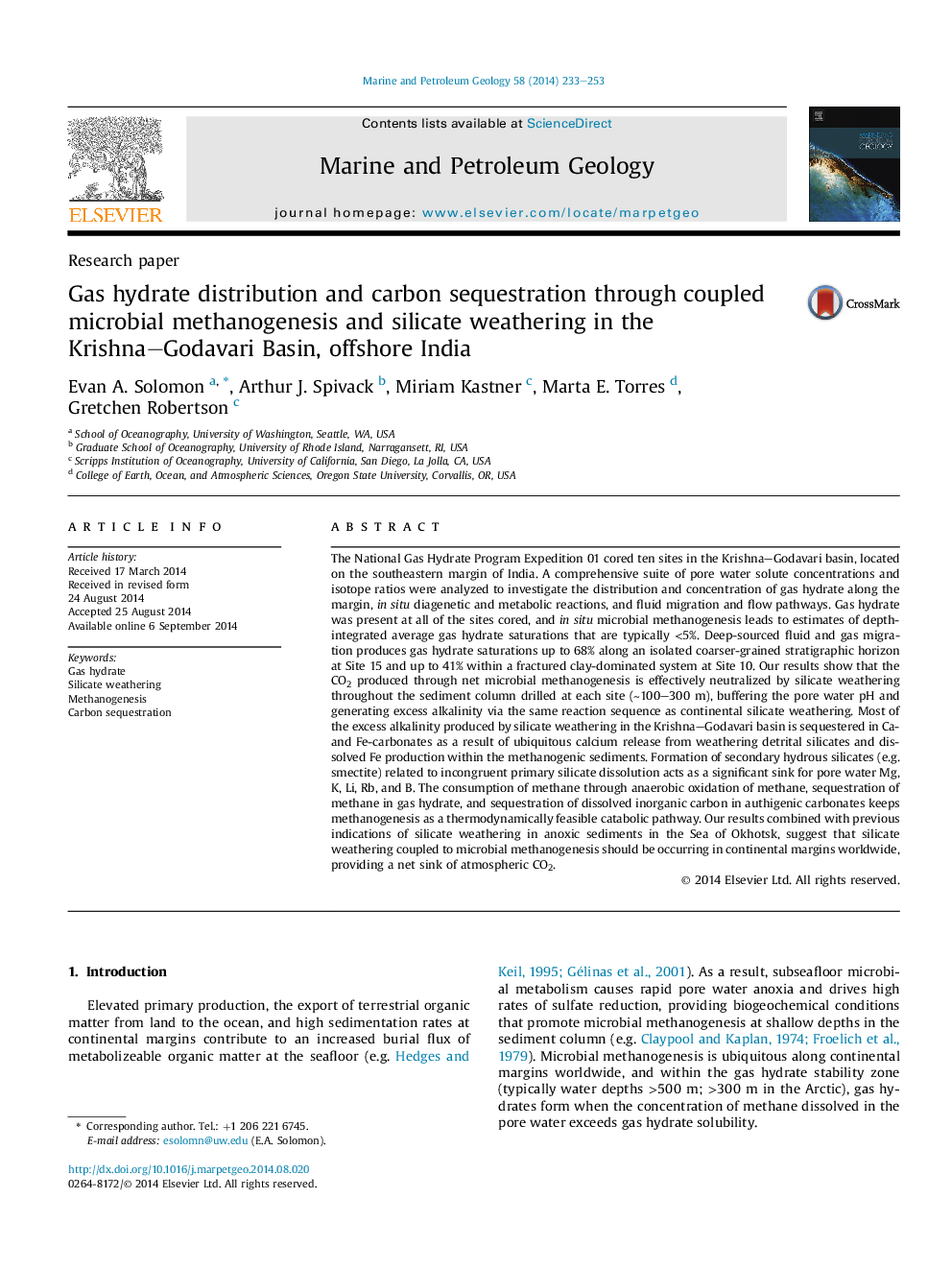| کد مقاله | کد نشریه | سال انتشار | مقاله انگلیسی | نسخه تمام متن |
|---|---|---|---|---|
| 6435222 | 1351619 | 2014 | 21 صفحه PDF | دانلود رایگان |
- Gas hydrate is present at all sites but concentration varies along the margin.
- Recent, rapid sedimentation leads to non-steady state pore water profiles.
- Methanogenic CO2 is neutralized by silicate weathering, producing alkalinity.
- Alkalinity produced by silicate weathering drives authigenic carbonate precipitation.
- Silicate weathering/carbonate precipitation sequesters DIC produced by methanogenesis.
The National Gas Hydrate Program Expedition 01 cored ten sites in the Krishna-Godavari basin, located on the southeastern margin of India. A comprehensive suite of pore water solute concentrations and isotope ratios were analyzed to investigate the distribution and concentration of gas hydrate along the margin, in situ diagenetic and metabolic reactions, and fluid migration and flow pathways. Gas hydrate was present at all of the sites cored, and in situ microbial methanogenesis leads to estimates of depth-integrated average gas hydrate saturations that are typically <5%. Deep-sourced fluid and gas migration produces gas hydrate saturations up to 68% along an isolated coarser-grained stratigraphic horizon at Site 15 and up to 41% within a fractured clay-dominated system at Site 10. Our results show that the CO2 produced through net microbial methanogenesis is effectively neutralized by silicate weathering throughout the sediment column drilled at each site (â¼100-300Â m), buffering the pore water pH and generating excess alkalinity via the same reaction sequence as continental silicate weathering. Most of the excess alkalinity produced by silicate weathering in the Krishna-Godavari basin is sequestered in Ca- and Fe-carbonates as a result of ubiquitous calcium release from weathering detrital silicates and dissolved Fe production within the methanogenic sediments. Formation of secondary hydrous silicates (e.g. smectite) related to incongruent primary silicate dissolution acts as a significant sink for pore water Mg, K, Li, Rb, and B. The consumption of methane through anaerobic oxidation of methane, sequestration of methane in gas hydrate, and sequestration of dissolved inorganic carbon in authigenic carbonates keeps methanogenesis as a thermodynamically feasible catabolic pathway. Our results combined with previous indications of silicate weathering in anoxic sediments in the Sea of Okhotsk, suggest that silicate weathering coupled to microbial methanogenesis should be occurring in continental margins worldwide, providing a net sink of atmospheric CO2.
Journal: Marine and Petroleum Geology - Volume 58, Part A, December 2014, Pages 233-253
